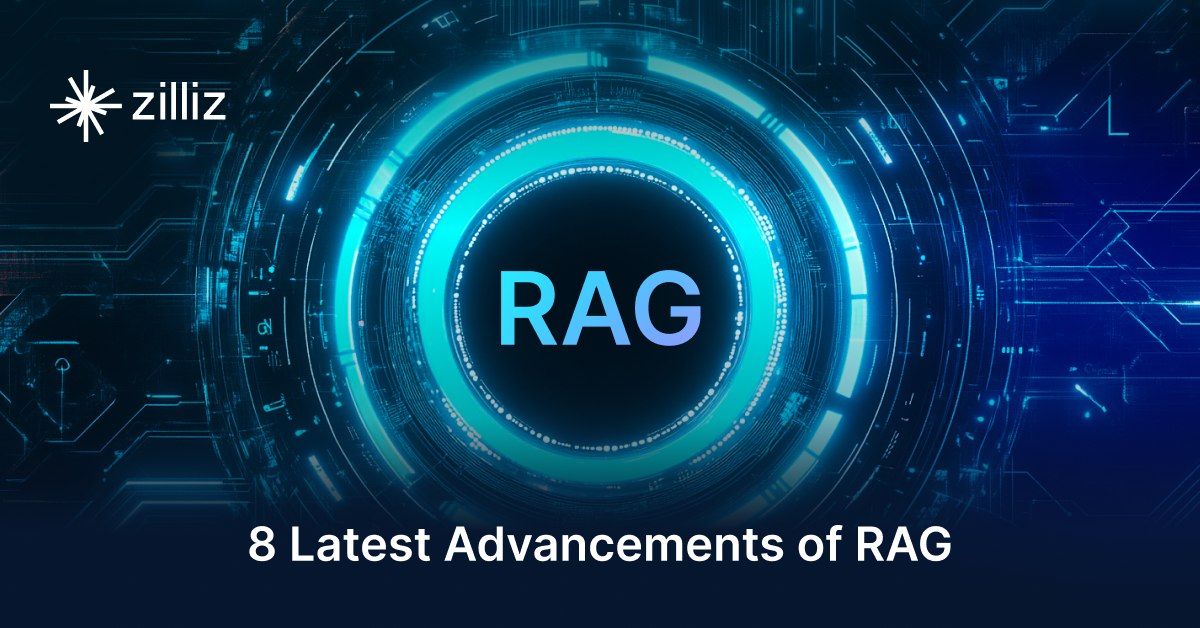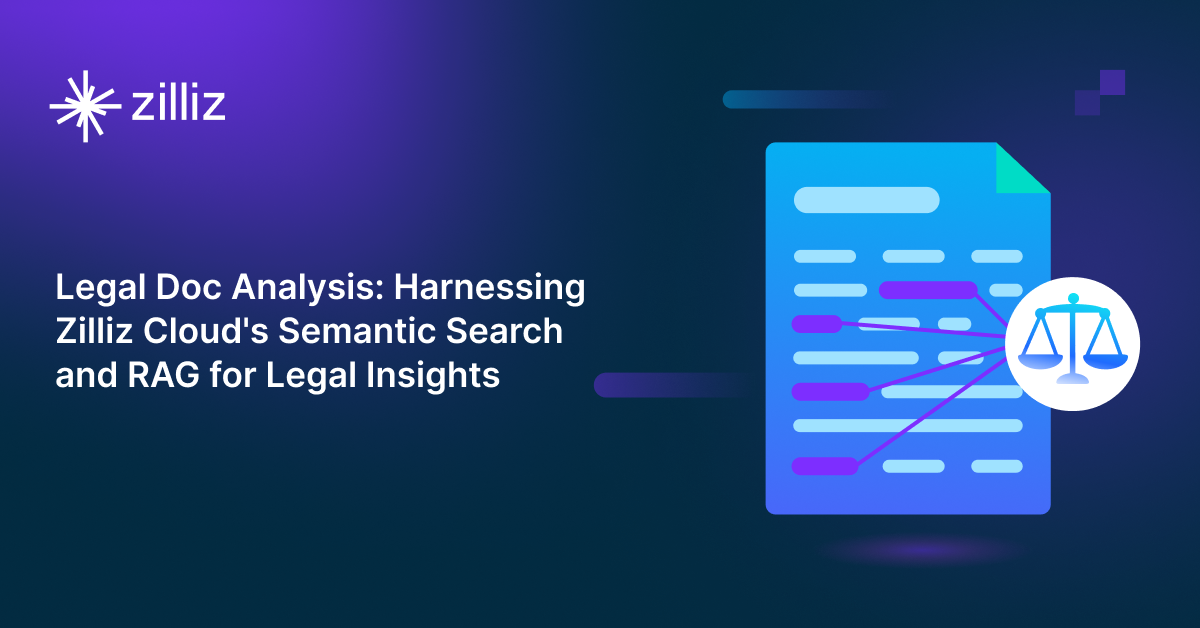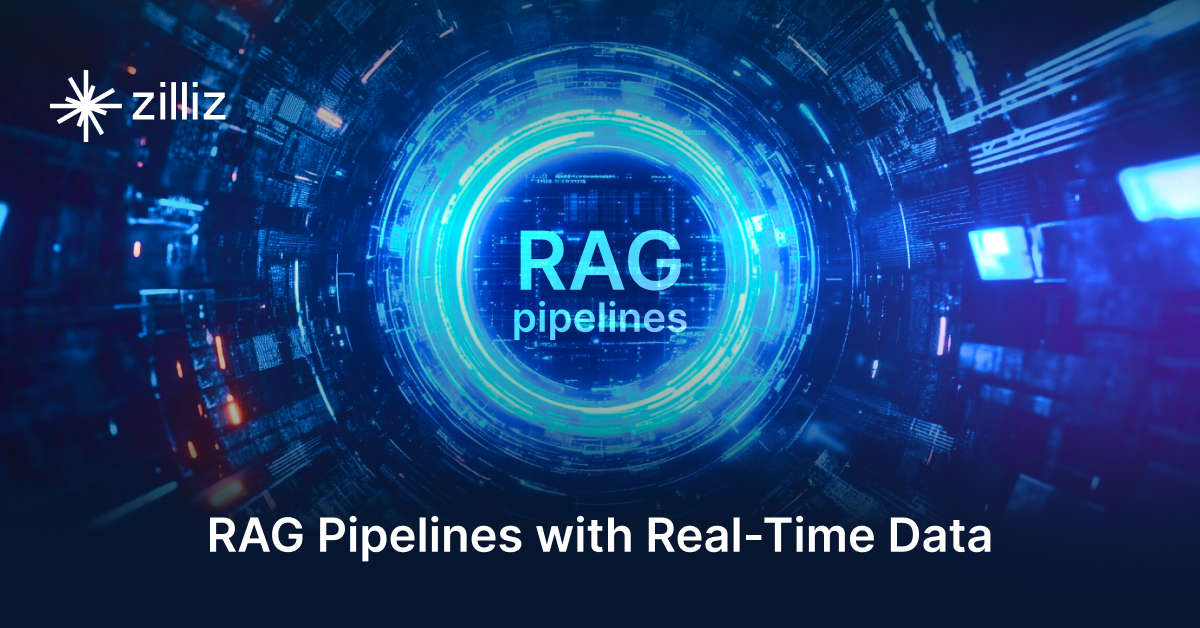Build RAG Chatbot with Haystack, Haystack In-memory store, STACKIT Meta-Llama-3.1-70B-Instruct-FP8, and STACKIT e5-mistral-7b-instruct
Introduction to RAG
Retrieval-Augmented Generation (RAG) is a game-changer for GenAI applications, especially in conversational AI. It combines the power of pre-trained large language models (LLMs) like OpenAI’s GPT with external knowledge sources stored in vector databases such as Milvus and Zilliz Cloud, allowing for more accurate, contextually relevant, and up-to-date response generation. A RAG pipeline usually consists of four basic components: a vector database, an embedding model, an LLM, and a framework.
Key Components We'll Use for This RAG Chatbot
This tutorial shows you how to build a simple RAG chatbot in Python using the following components:
- Haystack: An open-source Python framework designed for building production-ready NLP applications, particularly question answering and semantic search systems. Haystack excels at retrieving information from large document collections through its modular architecture that combines retrieval and reader components. Ideal for developers creating search applications, chatbots, and knowledge management systems that require efficient document processing and accurate information extraction from unstructured text.
- Haystack in-memory store: a very simple, in-memory document store with no extra services or dependencies. It is great for experimenting with Haystack, and we do not recommend using it for production. If you want a much more scalable solution for your apps or even enterprise projects, we recommend using Zilliz Cloud, which is a fully managed vector database service built on the open-source Milvusand offers a free tier supporting up to 1 million vectors.)
- STACKIT Meta-Llama-3.1-70B-Instruct-FP8: A 70-billion-parameter instruction-tuned AI model optimized for complex NLP tasks. Leveraging FP8 quantization, it balances high performance with efficient resource usage, excelling in understanding nuanced instructions and generating context-aware responses. Ideal for enterprise applications requiring precise, scalable solutions in chatbots, virtual assistants, data analysis, and automated content generation.
- STACKIT e5-mistral-7b-instruct: A 7B-parameter language model optimized for instruction-based tasks, delivering efficient, context-aware responses. Excels in natural language understanding, scalability, and low-latency performance. Ideal for enterprise automation, customer support, technical documentation, and generating structured outputs from complex prompts. Combines precision with adaptability for business-critical AI applications.
By the end of this tutorial, you’ll have a functional chatbot capable of answering questions based on a custom knowledge base.
Note: Since we may use proprietary models in our tutorials, make sure you have the required API key beforehand.
Step 1: Install and Set Up Haystack
import os
import requests
from haystack import Pipeline
from haystack.components.converters import MarkdownToDocument
from haystack.components.preprocessors import DocumentSplitter
from haystack.components.writers import DocumentWriter
Step 2: Install and Set Up STACKIT Meta-Llama-3.1-70B-Instruct-FP8
STACKIT is the cloud and colocation provider of the Schwarz Group. We can use different models on its cloud services with ease through its API.
pip install stackit-haystack
from haystack_integrations.components.generators.stackit import STACKITChatGenerator
from haystack.dataclasses import ChatMessage
generator = STACKITChatGenerator(model="neuralmagic/Meta-Llama-3.1-70B-Instruct-FP8")
Step 3: Install and Set Up STACKIT e5-mistral-7b-instruct
pip install stackit-haystack
from haystack_integrations.components.embedders.stackit import STACKITTextEmbedder
from haystack_integrations.components.embedders.stackit import STACKITDocumentEmbedder
text_embedder = STACKITTextEmbedder(model="intfloat/e5-mistral-7b-instruct")
document_embedder = STACKITDocumentEmbedder(model="intfloat/e5-mistral-7b-instruct")
Step 4: Install and Set Up Haystack In-memory store
from haystack.document_stores.in_memory import InMemoryDocumentStore
from haystack.components.retrievers import InMemoryEmbeddingRetriever
document_store = InMemoryDocumentStore()
retriever=InMemoryEmbeddingRetriever(document_store=document_store))
Step 5: Build a RAG Chatbot
Now that you’ve set up all components, let’s start to build a simple chatbot. We’ll use the Milvus introduction doc as a private knowledge base. You can replace it your own dataset to customize your RAG chatbot.
url = 'https://raw.githubusercontent.com/milvus-io/milvus-docs/refs/heads/v2.5.x/site/en/about/overview.md'
example_file = 'example_file.md'
response = requests.get(url)
with open(example_file, 'wb') as f:
f.write(response.content)
file_paths = [example_file] # You can replace it with your own file paths.
indexing_pipeline = Pipeline()
indexing_pipeline.add_component("converter", MarkdownToDocument())
indexing_pipeline.add_component("splitter", DocumentSplitter(split_by="sentence", split_length=2))
indexing_pipeline.add_component("embedder", document_embedder)
indexing_pipeline.add_component("writer", DocumentWriter(document_store))
indexing_pipeline.connect("converter", "splitter")
indexing_pipeline.connect("splitter", "embedder")
indexing_pipeline.connect("embedder", "writer")
indexing_pipeline.run({"converter": {"sources": file_paths}})
# print("Number of documents:", document_store.count_documents())
question = "What is Milvus?" # You can replace it with your own question.
retrieval_pipeline = Pipeline()
retrieval_pipeline.add_component("embedder", text_embedder)
retrieval_pipeline.add_component("retriever", retriever)
retrieval_pipeline.connect("embedder", "retriever")
retrieval_results = retrieval_pipeline.run({"embedder": {"text": question}})
# for doc in retrieval_results["retriever"]["documents"]:
# print(doc.content)
# print("-" * 10)
from haystack.utils import Secret
from haystack.components.builders import PromptBuilder
retriever=InMemoryEmbeddingRetriever(document_store=document_store)
text_embedder = STACKITTextEmbedder(model="intfloat/e5-mistral-7b-instruct")
prompt_template = """Answer the following query based on the provided context. If the context does
not include an answer, reply with 'I don't know'.\n
Query: {{query}}
Documents:
{% for doc in documents %}
{{ doc.content }}
{% endfor %}
Answer:
"""
rag_pipeline = Pipeline()
rag_pipeline.add_component("text_embedder", text_embedder)
rag_pipeline.add_component("retriever", retriever)
rag_pipeline.add_component("prompt_builder", PromptBuilder(template=prompt_template))
rag_pipeline.add_component("generator", generator)
rag_pipeline.connect("text_embedder.embedding", "retriever.query_embedding")
rag_pipeline.connect("retriever.documents", "prompt_builder.documents")
rag_pipeline.connect("prompt_builder", "generator")
results = rag_pipeline.run({"text_embedder": {"text": question}, "prompt_builder": {"query": question},})
print('RAG answer:\n', results["generator"]["replies"][0])
Optimization Tips
As you build your RAG system, optimization is key to ensuring peak performance and efficiency. While setting up the components is an essential first step, fine-tuning each one will help you create a solution that works even better and scales seamlessly. In this section, we’ll share some practical tips for optimizing all these components, giving you the edge to build smarter, faster, and more responsive RAG applications.
Haystack optimization tips
To optimize Haystack in a RAG setup, ensure you use an efficient retriever like FAISS or Milvus for scalable and fast similarity searches. Fine-tune your document store settings, such as indexing strategies and storage backends, to balance speed and accuracy. Use batch processing for embedding generation to reduce latency and optimize API calls. Leverage Haystack's pipeline caching to avoid redundant computations, especially for frequently queried documents. Tune your reader model by selecting a lightweight yet accurate transformer-based model like DistilBERT to speed up response times. Implement query rewriting or filtering techniques to enhance retrieval quality, ensuring the most relevant documents are retrieved for generation. Finally, monitor system performance with Haystack’s built-in evaluation tools to iteratively refine your setup based on real-world query performance.
Haystack in-memory store optimization tips
Haystack in-memory store is just a very simple, in-memory document store with no extra services or dependencies. We recommend that you just experiment it with RAG pipeline within your Haystack framework, and we do not recommend using it for production. If you want a much more scalable solution for your apps or even enterprise projects, we recommend using Zilliz Cloud, which is a fully managed vector database service built on the open-source Milvusand offers a free tier supporting up to 1 million vectors
STACKIT Meta-Llama-3.1-70B-Instruct-FP8 optimization tips
To optimize STACKIT Meta-Llama-3.1-70B-Instruct-FP8 in RAG, prioritize reducing input token length by truncating or summarizing retrieved documents to fit the model’s context window. Use FP8 precision to accelerate inference while maintaining accuracy. Batch processing for parallel queries improves throughput. Cache frequent or repetitive queries to avoid redundant computations. Fine-tune retrieval thresholds to balance relevance and noise. Leverage hardware-specific optimizations (e.g., Tensor Cores on GPUs) and enable model parallelism for distributed workloads. Monitor memory usage to prevent bottlenecks, and prune low-confidence outputs early to save resources.
STACKIT e5-mistral-7b-instruct optimization tips
To optimize STACKIT e5-mistral-7b-instruct in RAG, ensure input context is well-structured with clear document chunks (≤512 tokens) and metadata for precise retrieval. Use dynamic temperature and top-p sampling to balance creativity and relevance. Fine-tune retrieval thresholds to minimize irrelevant context injection. Batch process queries for GPU efficiency, and enable FlashAttention for faster inference. Precompute embeddings for static data to reduce latency. Regularly evaluate retrieval accuracy and model outputs via metrics like Hit Rate and ROUGE, adjusting prompts and chunk sizes iteratively.
By implementing these tips across your components, you'll be able to enhance the performance and functionality of your RAG system, ensuring it’s optimized for both speed and accuracy. Keep testing, iterating, and refining your setup to stay ahead in the ever-evolving world of AI development.
RAG Cost Calculator: A Free Tool to Calculate Your Cost in Seconds
Estimating the cost of a Retrieval-Augmented Generation (RAG) pipeline involves analyzing expenses across vector storage, compute resources, and API usage. Key cost drivers include vector database queries, embedding generation, and LLM inference.
RAG Cost Calculator is a free tool that quickly estimates the cost of building a RAG pipeline, including chunking, embedding, vector storage/search, and LLM generation. It also helps you identify cost-saving opportunities and achieve up to 10x cost reduction on vector databases with the serverless option.
 Calculate your RAG cost
Calculate your RAG cost
What Have You Learned?
By diving into this tutorial, you’ve unlocked the magic of building a RAG system from the ground up! You learned how Haystack, the flexible framework, acts as the backbone, seamlessly connecting all the pieces. The Haystack In-memory Store became your go-to vector database, storing embeddings lightning-fast for real-time retrieval. Then came the STACKIT e5-mistral-7b-instruct embedding model, transforming text into rich, searchable vectors that capture meaning like a pro. And let’s not forget the star of the show—STACKIT Meta-Llama-3.1-70B-Instruct-FP8, the powerhouse LLM that generates human-like answers by synthesizing retrieved context with its vast knowledge. Together, these tools form a dynamic pipeline where retrieval meets generation, turning raw data into actionable insights. You even picked up optimization tricks, like tuning chunk sizes and balancing speed with accuracy, to make your RAG system scream with efficiency. Plus, that free RAG cost calculator? A game-changer for budgeting your experiments without surprises!
Now it’s your turn to run with this knowledge! You’ve got the blueprint—whether you’re building a chatbot, a research assistant, or a creative co-pilot, your RAG toolkit is ready. Experiment with different models, tweak retrieval strategies, and let that cost calculator guide your innovation. The future of intelligent applications is in your hands, and every line of code you write brings it closer. So fire up Haystack, play with those embeddings, and watch your ideas come alive. The road ahead is packed with possibilities—go build something amazing, optimize it fearlessly, and share it with the world. Your next breakthrough starts now! 🚀
Further Resources
🌟 In addition to this RAG tutorial, unleash your full potential with these incredible resources to level up your RAG skills.
- How to Build a Multimodal RAG | Documentation
- How to Enhance the Performance of Your RAG Pipeline
- Graph RAG with Milvus | Documentation
- How to Evaluate RAG Applications - Zilliz Learn
- Generative AI Resource Hub | Zilliz
We'd Love to Hear What You Think!
We’d love to hear your thoughts! 🌟 Leave your questions or comments below or join our vibrant Milvus Discord community to share your experiences, ask questions, or connect with thousands of AI enthusiasts. Your journey matters to us!
If you like this tutorial, show your support by giving our Milvus GitHub repo a star ⭐—it means the world to us and inspires us to keep creating! 💖
- Introduction to RAG
- Key Components We'll Use for This RAG Chatbot
- Step 1: Install and Set Up Haystack
- Step 2: Install and Set Up STACKIT Meta-Llama-3.1-70B-Instruct-FP8
- Step 3: Install and Set Up STACKIT e5-mistral-7b-instruct
- Step 4: Install and Set Up Haystack In-memory store
- Step 5: Build a RAG Chatbot
- Optimization Tips
- RAG Cost Calculator: A Free Tool to Calculate Your Cost in Seconds
- What Have You Learned?
- Further Resources
- We'd Love to Hear What You Think!
Content
Vector Database at Scale
Zilliz Cloud is a fully-managed vector database built for scale, perfect for your RAG apps.
Try Zilliz Cloud for Free


